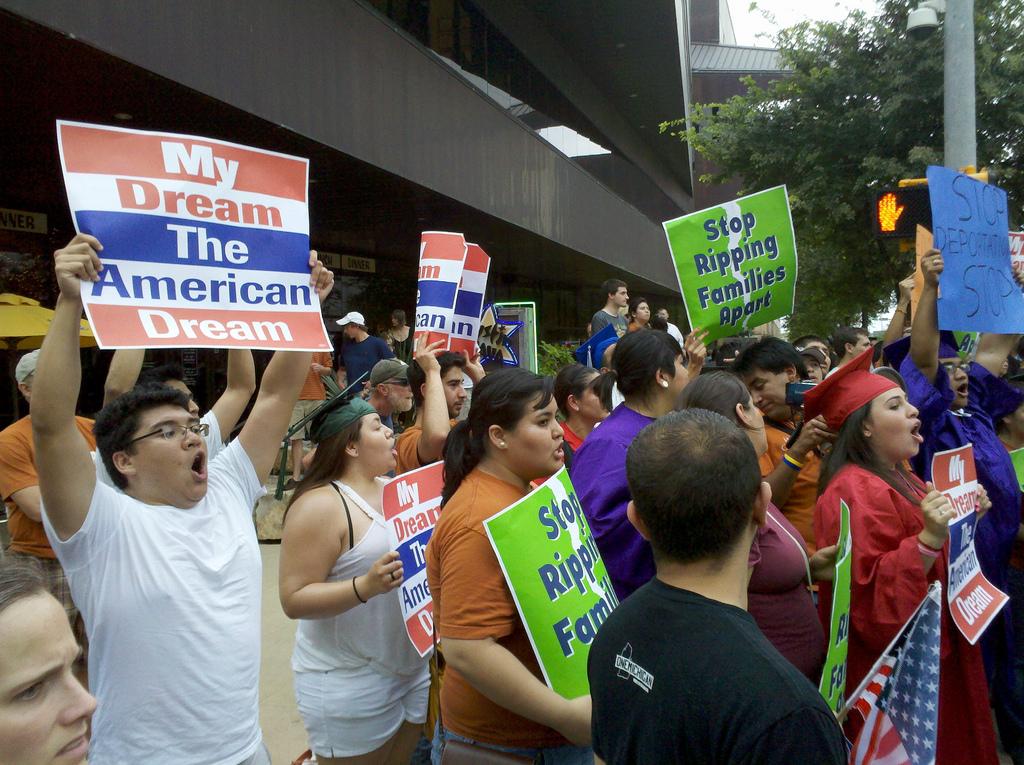
The first, from an article in the Chicago Tribune, “A Kansas chemistry professor got his kids ready for school — then ICE arrested him on his front lawn,” goes like this:
a 55-year-old father of three, Syed Ahmed Jamal, an immigrant from Bangladesh who’s been in the U.S. for 30 years, with graduate degrees in molecular biosciences and pharmaceutical engineering, whose 5 siblings are American citizens, who regularly volunteers at his children’s school, who had had an H1-B and student visa in the past and now had a work permit, was inexplicably detained by ICE agents for no particular reason.
No particular reason, that is, that the reporter, or the family, cares to share with the readers, except by reading between the lines and making some guesses.
Jamal reportedly had an H1-B visa at some point, then a student visa as a Ph.D. student, but that program “did not work out.” Then he “kind of went out of status” according to his brother — a very passive statement that presumably means that, leaving the Ph.D. program, no longer had a valid visa but nonetheless stayed in the country. There is no mention of his wife sponsoring him, and his children are specifically referred to as American citizens, but not his wife; if she were a legal permanent resident, she should still have been able to sponsor him, unless he had done something that had triggered a 3 or 10 year bar. Or was she also an illegal immigrant, but not subject to the deportation order? And did he quit the job for the doctoral program, or did he lose that job? Strictly speaking, H1-B visas offer no guarantee of permanence.
In the meantime, the story continues:
In 2011, after Jamal’s visa status became invalid, he was given a “voluntary departure” order. The following year, an immigration judge ruled that Jamal was allowed to remain in the country, as long as he checked in with ICE regularly to maintain his work permit.
The article implies that this means that Jamal was given the equivalent of a suspended sentence, clearance to live in the United States indefinitely. But that’s not what a “voluntary departure order” is; according to the magic of the internet, this is an order that means that one is given an indeterminate length of time to get one’s affairs in order and leave in a dignified manner. The work permit is not meant to be a promise of long-term residence but simply a matter of permission to support oneself while one does so. To be sure, this system has morphed into a perception of a promise of indefinite residence, but, strictly speaking, that’s not what it is. Someone living her under those conditions has no legal right to be here.
We also don’t know under what conditions the 2011 “voluntary departure” order was issued; given how infrequently the government actually takes action against illegal immigrants, what was it that triggered this in the first place?
In general, I’m sure that the family is sympathetic, but I can’t help but think we’re not being told the whole story.
The second, from “There are 750 Canadian ‘Dreamers’ facing possible deportation from U.S. after Trump decision,” in the Canadian National Post, highlights an insufferably whiny 27 year-old woman who is one of 750 illegal immigrants from Canada currently with DACA work authorization. “They spell their words funny there,” she says, which is labelled as “joking about the situation” but the joke, to me, falls flat.
The woman, Leezia Dhalla, attended Northwestern University, and now works for Mark Zuckerberg’s political action group Fwd.us.
The Post reports,
Jason Finkelman, an Austin, Tex.-based immigration lawyer who has a handful of Canadian Dreamer clients, says most entered the U.S. on their parents’ work or study visas, then overstayed with their families and become undocumented.
Abandoning the country they consider home for Canada would be a “huge” dislocation, especially since many left when they were small children and have no close family or friends here, he said.
In Dhalla’s case,
Dhalla’s story began with a flat housing market in Edmonton, which convinced her realtor father to buy a business in Texas in the mid-1990s, then obtain a visa that allowed the family to follow him south.
Her childhood was marked by regular visits to the immigration lawyer, but attempts to get permanent residency floundered, partly because of red-tape errors: an employer who filed papers late, and another who sold his business before the Canadians’ application could be processed.
But something doesn’t hang together here. Are her parents still illegal residents? Were they somehow able to get residency for themselves but not for their children? Or did they manage to stay legal with a string of temporary visas? Why, if he bought a business in Texas, was he looking to get residency through employers? And once these attempts fell apart — and the article doesn’t provide any timing — why wouldn’t the family simply have moved back to Canada, especially since the oil boom has brought greater prosperity to their hometown? Or were Dhalla’s parents not citizens of Canada, and therefore gave up their permanent residency in Canada upon moving, and living long-term in the United States, so that the cause she’s fighting for is not just her own ability to stay here, but her parents’, as well?
(And, separately, how did she afford Northwestern without being eligible for financial aid?)
Quite honestly, making the claim that these young adults are just as in need of legalization as someone whose native country is poor, violence-wracked, or uses a language in which the person cannot read and write fluently, really just makes the whole thing ludicrous. Yes, of course, no one wants to move when they don’t have to. But a move to Canada would be little different than a move to elsewhere in the United States, say, for family or work reasons, in all the essentials. Yes, she’d have to get used to the metric system, and, with her degree in journalism, she’d have an editor correcting her spelling of color and honor and theater until she changed her auto-correct to British English. She laments that it would imperil her dream of becoming a lawyer, “after an education founded in U.S. politics and law” (is this a real problem?) and that she’d be “separated from friends in the States” (life lesson: your friends at age 27 are not necessarily going to be lifelong friends, and plenty of them will move out-of-town anyway). But if her primary concern is with Mom & Dad’s status, and the fact that, if she returned to Canada, they wouldn’t be able to follow her, or even visit her, well, it’s misleading not to say so.
Incidentally, a link in this story takes one to a list of countries of birth of DACA recipients, and most of these are Third-World-type countries. But there are 500 individuals born in the UK, and 360 born in Israel, and even 220 born in Germany — but in these cases, too, it may be that, regardless of their country of birth, they or their parents lacked citizenship there.
So look, in both cases, I know what I’m writing comes off as heartless, but I’m really getting tired of journalists and policy advocates and politicians who consider illegal immigration and long term illegal residence (including the under-the-table or forged-ID work that comes along with it) as something absolutely ordinary and routine and, if technically illegal, only in the same way as a rolling stop at a stop sign or driving 30 in a 25 mph zone, of no real moral significance at all, and just another action that one can take to improve one’s lot in life, especially if you’ve made good-faith efforts to become a legal resident and are “the kind of person we want in this country” as opposed to the shiftless layabout native-born poor.
Image: https://www.flickr.com/photos/ret0dd/5708625905










